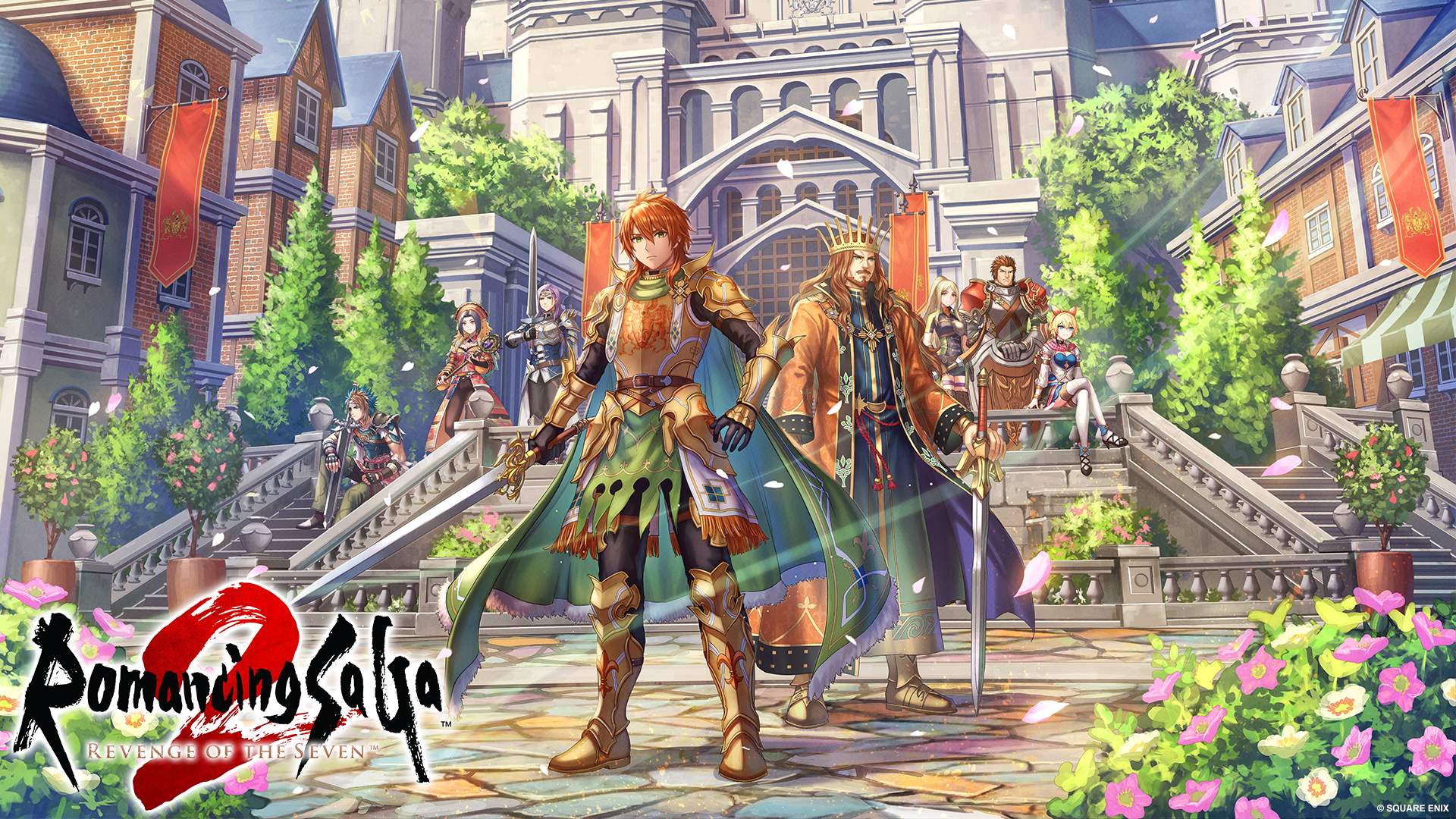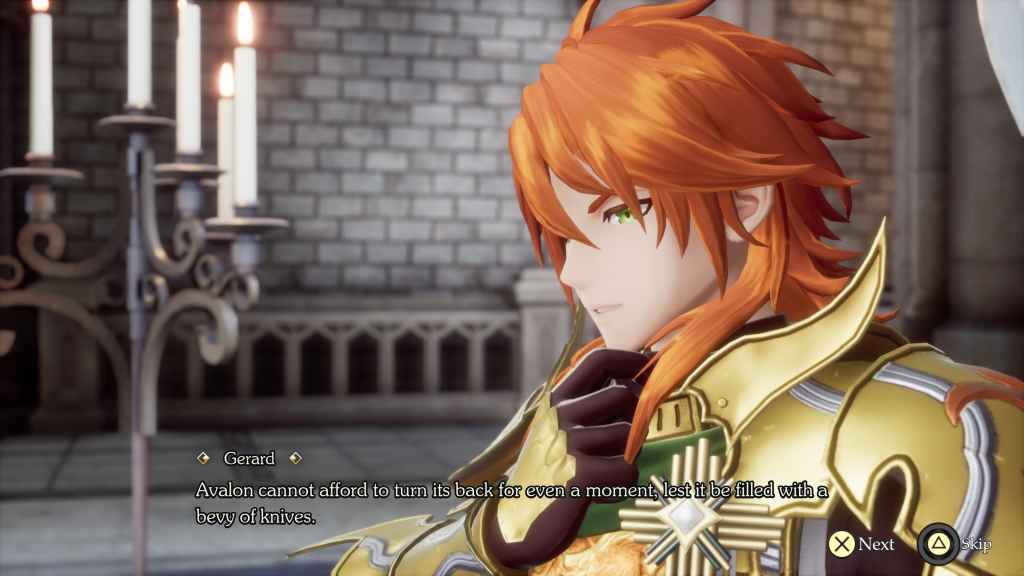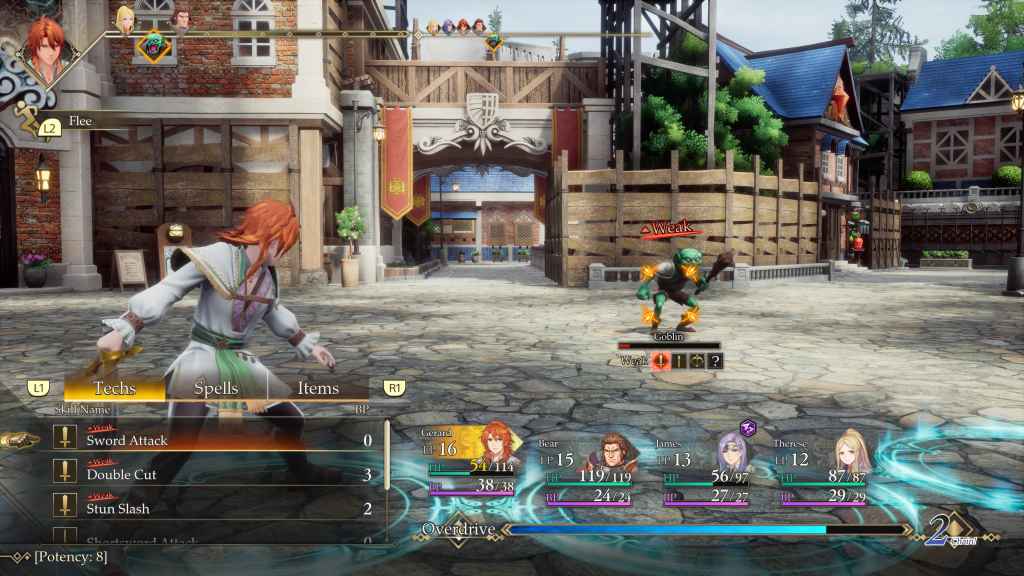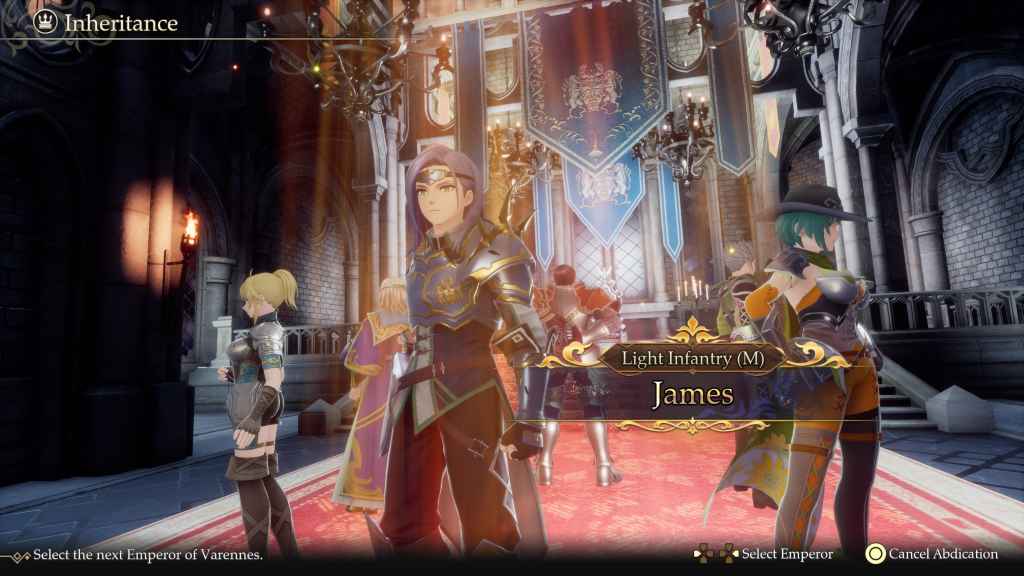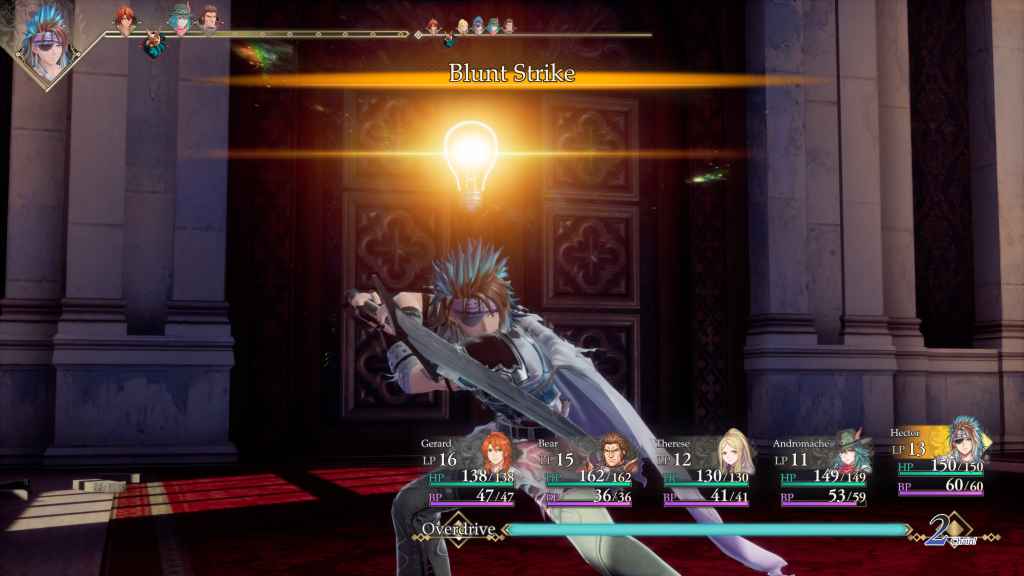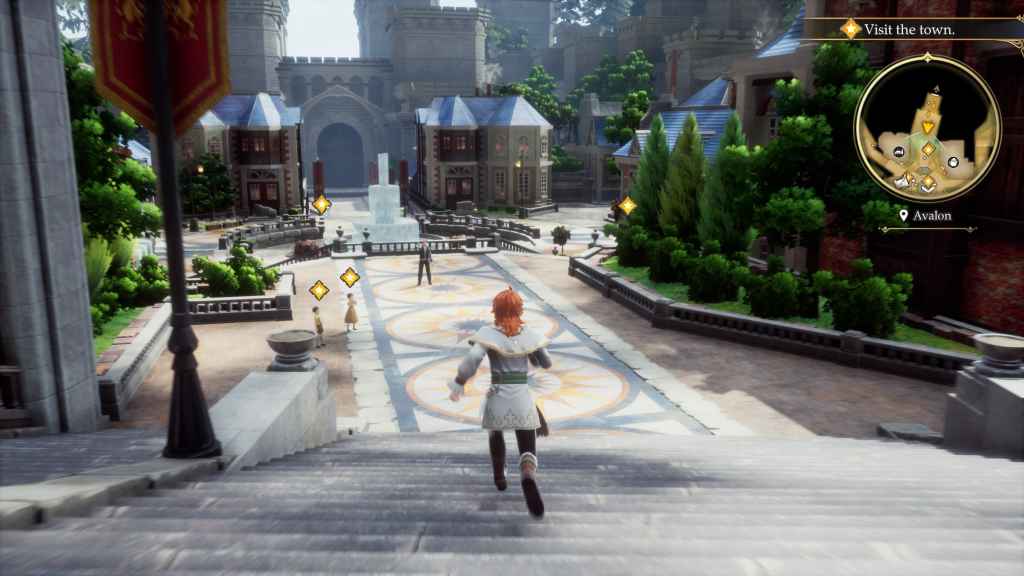Romancing SaGa 2: Revenge of the Seven PS5 Review. There’s a certain ambition to RPGs from the golden age of Square Enix that have maintained some serious allure over the years. In a period where games seem to be taking the easy way about delivering narratives and gameplay experiences, there are games that almost exist as anomalies; and Romancing SaGa 2 is one of those games.
The original game pushes an ambitious premise of succession and inheritance that truly feels distinct even today, and the full remake of the game manages to completely preserve that experience and polishes it for a modern era, while not missing what made the original such a cult hit on its original release. Some odd choices here and there stymy what should be a home run, but this certainly stands as one of Square Enix’s premier remakes in recent memory.
Romancing SaGa 2: Revenge of the Seven Review (PS5) – Revisiting a Grand Legacy
Taking the Throne
Romancing SaGa 2 is unique by all measures – even by today’s standards. Where most RPGs focus closely on a set cast of characters on a single journey to a defined endpoint, this game – quite literally – plays the long game and puts far more agency in the player’s hands as to exactly how they want to go about completing the lofty goals set out early on during the prologue.
This basic premise is what carries the narrative forward, rather than the memorable character dynamics and personal trials that many will associate with most typical RPGs. To this extent, Romancing SaGa 2: Revenge of the Seven is a game that takes the “role-playing” part of the RPG acronym and runs with it. You are very much encouraged to take the mantle of King and become invested in your subjects and the campaigns that you choose to engage with, as well as the struggles you invariably encounter.
Across generations, you take control of a monarch and a party of recruitable characters to defend your throne from the (almost paradoxically named) Seven Heroes that aim to dethrone you and besiege Avalon. To do so, you steadily grow your reach and take part in missions across an expansive continent in order to put up resistance. The focus is placed solidly in the gameplay and concept of moving from leader to leader over the course of playtime and this was something that has both positives and weaknesses to consider when talking about an RPG that is this expansive.
For those who might have gotten accustomed to the more character-focused outings from Square Enix, this premise might leave you aching for that bit more as you progress. With how you’re free to essentially play as any character at a time, your story is going to be far more personal than many other RPGs from the renowned studio. You’re free to pursue objectives as you like as you progress and this has a tangible impact on the world and how you progress even further, and this was something that I struggled to really comprehend on my first time picking it up.
Your ultimate goal to defeat the titular “seven heroes” is one that has been expanded in this remake to give some more vital context to exactly who you’re fighting and this was appreciated set dressing for those who were previously relatively flat characters.
There’s a truly dynamic story here that bends to what you want to do, and perfectly suits the theme of creating a dynasty and continuing a lineage of heroes to see the job done at the end of the day. I’ve played games that play with passing time, but none of them have quite done it on the scale of this, and that’s something to be noticed.
A Royal Conquest
There’s a classic appeal to the gameplay loop of Romancing SaGa 2 beyond the premise of changing leaders. Instead of having an expansive open world to explore, this remake sticks close to the original and keeps navigation to specific areas of the world map, making sure that there’s very little downtime between dungeons and towns when you want to go to a new location.
The 3D overhaul of this remake truly shows during the light exploration elements throughout each area, with optional paths and enemies being encountered throughout. Just like the original, enemies are found in the overworld before quickly transitioning into turn-based combat, where the majority of encounters play out, which has seen quite an overhaul in this remake, and arguably one of the bigger facelifts.
Combat plays out in a relatively standard turn-based affair, but strategising and planning out movements is a clear focus for this iteration of the tried-and-true foundation. New to this remake is the combat timeline, which shows precisely where your allies and enemies will have the chance to act during a specific turn. When compared to the original, this gave me plenty of insight as to when to prioritise defence and when to go all out. Where I may have previously been caught off guard by an attack, I was given plenty of chances to see it coming and act accordingly.
Existing systems have been expanded for a remake in the modern era, giving you a reason to explore and experiment with your party composition throughout the generations you travel across. Creating a strong party of five that manages to cover all necessary bases while still being effective was an ongoing project and was one that carried its own weight.
The same goes for the Formation system, which gives you even more control over your retinue’s affinities for various combat scenarios. While it’s perfectly possible to scrap your way through encounters using the default muddle, I found far more effective results by purposefully placing characters where they would do best. Sticking an armoured unit at the front of the fray while a healer took up the rear meant that some of my squishier units were slightly less susceptible to sudden attacks out of nowhere.
The Elephant in the Room
Permadeath is a mechanic that has divided many an audience in gaming discourse throughout the years and across genres. The idea of losing a character that you’ve invested time into across potentially tens of hours is a scary one that can turn people away from an experience. Romancing SaGa 2: Revenge of the Seven – in line with the theme of inheritance and passing things down – makes use of this mechanic in an interesting way.
While the game certainly isn’t the most challenging turn-based RPG I’ve ever played – with generous health refills between every battle – the LP system keeps you from getting scrappy and reckless with your battling, as running out of health costs you in this resource, which will permanently kill one of your party members should it hit zero.
This effectively works as the second way of having to change your party composition, with time progression also being a significant factor when developing a new generation of warriors. Your own emotional attachment to your retinue is used in combat in order to encourage you to think smartly and carefully about what comes next.
This mechanic isn’t one that can be avoided or switched off, just down to how integral it is to progression, but the game certainly doesn’t punish you for changing your main character. There’s no limit as to how many monarchs you can use throughout your journey and this is probably one of the most important things to drive home. You’re never put in a corner or made to fight against the odds, especially if you invest in weaponry and developing Avalon across generations.
There’s a cycle that ticks away at the heart of this game that feels perfectly aligned with the theme of royal succession and really helps to bring it all together into a cohesive whole, despite the obstacles this game faces in story.
A Faint Glimmer of Something
When it comes down to how characters actually level up and progress throughout the game, there’s a real sense of dynamism that underpins everything. Similar to the freedom to go where you like in the story, there’s also a flexibility to be found within the progression system of the game, that – while ambitious and interesting on paper – flounders in execution and left me feeling frustrated.
Characters specifically gain experience in the areas that they specialise in, leading them to improve where it counts most. An archer isn’t going to develop their affinity for greatswords unless they decide to pick one up. In this way, characters are left to specialise on their own abilities and waste no points on irrelevant stats. If you want to improve a character’s ability to heal, make sure you use them as much as possible. It reflects a more realised version of Final Fantasy II’s offbeat system and manages to be a bit more palatable here.
The same could be said about enemies gradually growing in strength as you do, ensuring that fights don’t become pushovers and actually encouraging you to sometimes avoid pointlessly entering combat at the risk of leveling your enemies up. On paper, this once again sounds like an interesting inversion of classic RPG conventions, but sometimes conventions are there for a reason. I found myself questioning whether or not actually fighting my enemies was even worth the impact it would have, when my own level-ups seemed to accord directly to enemy strength.
These oddities come to a boiling point with the Glimmer system. This unique method of learning new abilities is again a curiosity on paper but left me feeling wildly confused and frustrated even from the early game. Skills are learnt through steadily using abilities marked with a lightbulb and eventually unlocking something as a result of that repeated use. Unfortunately, there’s a big element of chance that rises to the surface and ended up making me feel like I was wasting moves until my next one happened to unlock itself, outside of anything I chose to do.
I can appreciate the vision here – and the commitment to maintaining what made the original Romancing SaGa 2 so distinct is admirable – but I can’t get on with this system of unlocking abilities. For a game all about building units over generations, I would have liked to have seen some more thoughtful engagement. You can find this engagement in the Avalon management sections and choosing your party compositions, but I struggled to glean much from the Glimmer system.
A Time Capsule and a Half
This remake has been handled by the same team that led the charge on the Trials of Mana remake from 2020 and their talent for preserving the charm of the original work shines through once again here. If we’re to see more 3D remakes of classic SNES RPGs, this is absolutely the form they should consider taking. Despite not having the hyperrealism of Square Enix’s other premiere Remake project in Final Fantasy 7, this art style manages to recapture the exact charm of the original and brings it to a new platform.
Environments are detailed and character models translate 2D sprites into 3D models with very little compromise overall. Alongside the environments, the soundtrack has also seen a faithful recreation with a full orchestration of the original score that stands shoulder-to-shoulder with the best of Square Enix’s lineage, which is almost a given in its own right. Even the addition of full voice acting manages to feel well implemented and convincing, which has been a consistent issue for remakes of classic games. Trials of Mana was critiqued for its interesting direction in vocal performance but the same is absolutely not true here, everybody is on top form.
There’s an undeniable confidence on show here for a game that hasn’t had the chance to take the limelight before now and it heartens me to see Square Enix returning to their backcatalogue to explore how they would be imagined with modern hardware in mind. Square Enix is no stranger to the idea of the remake and Romancing SaGa 2: Revenge of the Seven stands as one of the more convincing efforts that we’ve seen in a long time.
Despite some of the oddities that exist in this remake, I can praise it highly for what it does right, and chalk those oddities to something that will certainly work for someone else. At times, I forgot that this was a remake with just how far it pushes a concept, and that’s impressive.
